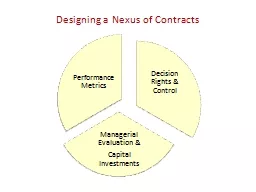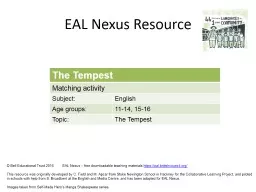PPT-Designing a Nexus of Contracts
Author : tatiana-dople | Published Date : 2017-07-27
Crucial Glue FINITE Communication Thinking Big Organizations live in Markets Product Markets Labor Markets Financial Markets How much is iPhone worth to you What
Presentation Embed Code
Download Presentation
Download Presentation The PPT/PDF document "Designing a Nexus of Contracts" is the property of its rightful owner. Permission is granted to download and print the materials on this website for personal, non-commercial use only, and to display it on your personal computer provided you do not modify the materials and that you retain all copyright notices contained in the materials. By downloading content from our website, you accept the terms of this agreement.
Designing a Nexus of Contracts: Transcript
Download Rules Of Document
"Designing a Nexus of Contracts"The content belongs to its owner. You may download and print it for personal use, without modification, and keep all copyright notices. By downloading, you agree to these terms.
Related Documents














